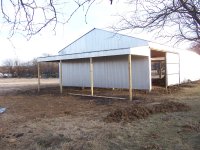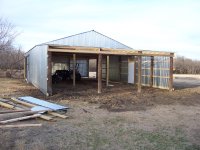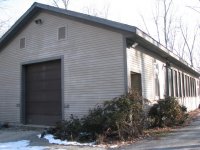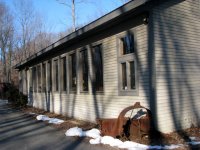jimmysisson
Veteran Member
- Joined
- Jul 11, 2005
- Messages
- 2,358
- Location
- W.Mass
- Tractor
- 1993 NH 2120 (the best), 1974 MF 135 (sold, but solid), 1947 Farmall A (bought, sold, bought back, sold again), 1956 MH50 lbt (sold, in 1980, darn it)
Eddie, I have to disagree in our climate at least. We have expansive clay soils in many places here, which hold moisture for a long time. We also have a 4' deep frost-protection in our building code, properly so. We've built lots of garages over the years, with slabs poured on compacted gravel. The early ones, with no poly under the slab, do seem to get damp (concrete) in spring and fall, when condensation is not a factor. They get WET in the summer, when we have high humidity and 80's-90's.
Later, we put poly under them and cut down on spring-fall dampness, but no change in summer sweating. Now, I recommend an inch of XPS foam directly under the slab, no poly. The foam isolates the concrete from ground temperature, and cuts any wicking. These slabs stay pretty dry year-round, even in the humid mid-summer. Different climates will likely act different.
I'm with Eddie on the pour-it-now bandwagon. The thought of putting all your tools, supplies, and busted vehicles out in the rain for a week while you're pouring the slab 4 years later will just stop you from ever doing so.
Jim
Later, we put poly under them and cut down on spring-fall dampness, but no change in summer sweating. Now, I recommend an inch of XPS foam directly under the slab, no poly. The foam isolates the concrete from ground temperature, and cuts any wicking. These slabs stay pretty dry year-round, even in the humid mid-summer. Different climates will likely act different.
I'm with Eddie on the pour-it-now bandwagon. The thought of putting all your tools, supplies, and busted vehicles out in the rain for a week while you're pouring the slab 4 years later will just stop you from ever doing so.
Jim





